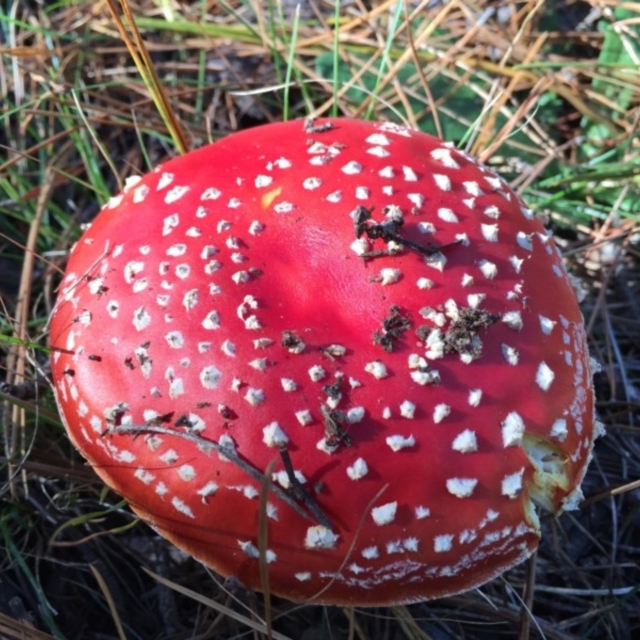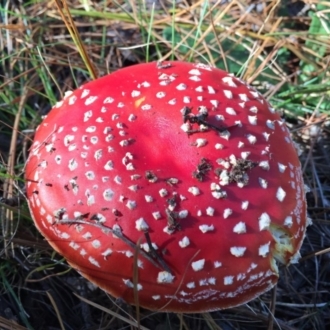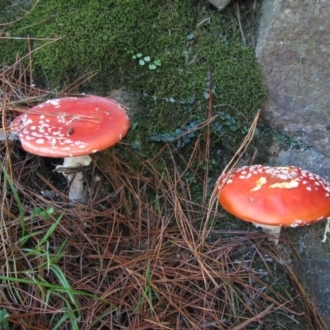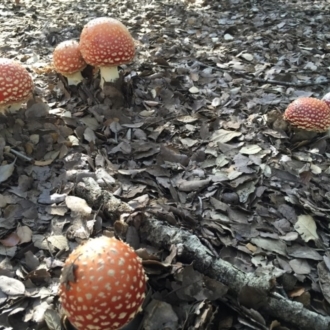Amanita muscaria (Fly Agaric)
The fruit body is a mushroom with a cap atop a central stem. At maturity the cap is generally red (but may be more orange-red) and usually with numerous white flecks of tissue on the cap surface. Those flecks are remnants of the universal veil (a membrane that enveloped the whole mushroom at the button stage). The veil remnants on the cap may disappear over time. The gills and stem are white. At the bulbous stem base, remnants of the universal veil remain as rings of white scales. This species also has a partial veil (that covers the gills in an immature mushroom) and in a mature mushroom this remains as a skirt-like ring of tissue around the upper part of the stem.
Spore print: white.
This is an introduced species from the northern hemisphere and in Australia is found mostly near introduced northern hemisphere trees (especially pines, oaks and birches).
In Tasmania and New Zealand it has been found growing in native forests, miles away from any introduced trees. While it has evolved and formed mycorrhizas with various northern hemisphere plants it is clear that in Australasia it has been able to adapt to other mycorrhizal partners.
It should not be possible to mistake Amanita muscaria for any other species.
Amanita muscaria is listed in the following regions:
Canberra & Southern Tablelands | Southern Highlands | South Coast | Hume | Barwon South West
1 2
Species information
- Amanita muscaria Scientific name
- Fly Agaric Common name
- Not Sensitive
- Exotic
- Non-invasive or negligible
- Up to 1344.6m Recorded at altitude
- Machine learning
-
In flower
Location information
-
Maps
Ainslie volcanic grassland ANBG ANU Banks Precinct Australian National University Bago State Forest Bass Gardens Park, Griffith Black Street Grasslands to Stirling Ridge Bluetts Block (402, 403, 12, 11) Bruce Ridge Bullen Range City Renewal Authority Area Commonwealth & Kings Parks Corroboree Park Denman Prospect 2 Estate Deferred Area (Block 12) Fadden Hills Pond Gibraltar Pines Ginninderry Conservation Corridor Goulburn Mulwaree Council Haig Park Isaacs Ridge Isaacs Ridge and Nearby Lake Burley Griffin West Lower Cotter Catchment Mongarlowe River Mount Ainslie to Black Mountain Mount Jerrabomberra Mount Jerrabomberra QP Namadgi National Park National Arboretum Forests Pine Island to Point Hut Rowes Lagoon Sherwood Forest Sullivans Creek, Lyneham South Sullivans Creek, Turner Tidbinbilla Nature Reserve Top Hut TSR Yerrabi Pond -
Places
Aranda, ACT Captains Flat, NSW Cotter River, ACT Greenway, ACT Mongarlowe, NSW








































































































































































































